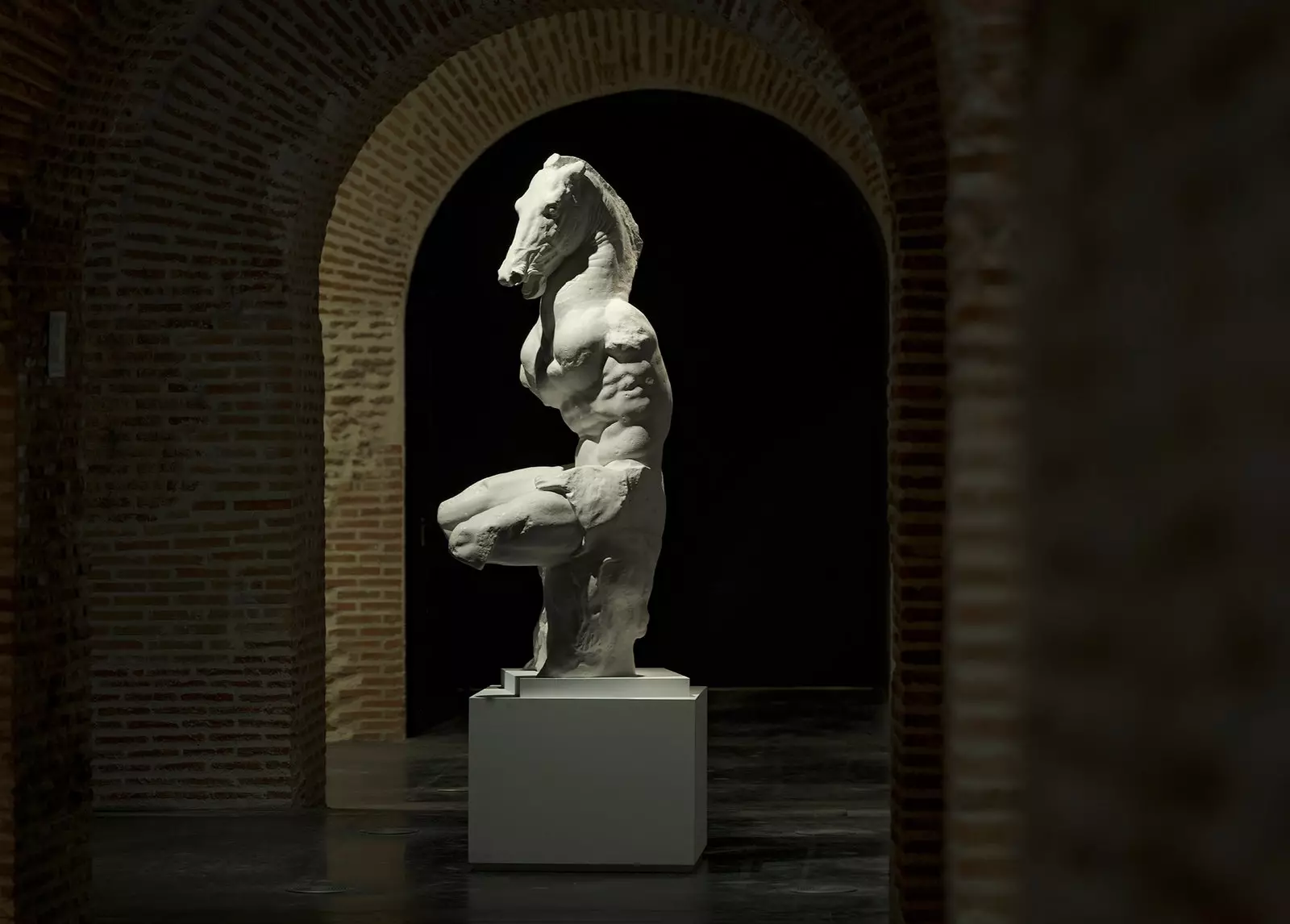
'Hypocephalus', by Mateo Maté
Since a courtyard of the Count Duke's barracks, in Madrid, Stairs lead, after a long descent, to the vault room. There, in the foundation of the building, under brick arches, the exhibition below the surface explores, through the work of 17 artists of the current scene, fears and dark areas that the pandemic crisis has laid bare.
In one of the rooms stands a plaster male torso with an equine head that, at first glance, might seem like a classical sculpture. Just look closely to see that Mateo Maté's Hypocephalus unites two works of antiquity to create a monster. The horse-headed man takes us to the Minotaur, who wandered in a labyrinth that might resemble the vaulted underground space of the old barracks.
Mateo Maté affirms that the monstrous is what deviates from the canon, that is, from the aesthetic norms that society applies to what it contemplates. Illness, old age, what is excluded from the racial, sexual or gender norm, is hidden, locked up, as the Minotaur was confined in the Cretan labyrinth.
Each era has projected its fears on figures that presented characteristics alien to the order of nature. The monster provokes fear, rejection, but his own transgressive character, his existence outside the convention, outside of what is permitted, loads these beings with attractiveness.
The roman emperor tiberius had a summer villa in Sperlonga , on the coast, south of Rome. A large grotto opened onto the sea. Tiberius knew in depth the Greek mythology. Young men of the nobility grew up in Rome reading the works of Homer. The odyssey It is a story full of fantastic beings that stalk the hero at every stage during his return to Ithaca.
Tiberius devised a game. In the flooded vault of the sea cave he installed monumental marble sculptural groups depicting scenes from Homer's work. The Sperlonga museum preserves the set in which Ulysses blinds Polyphemus's one eye with a spear, a Cyclops that held him and his crew captive, and threatened to devour them one by one.
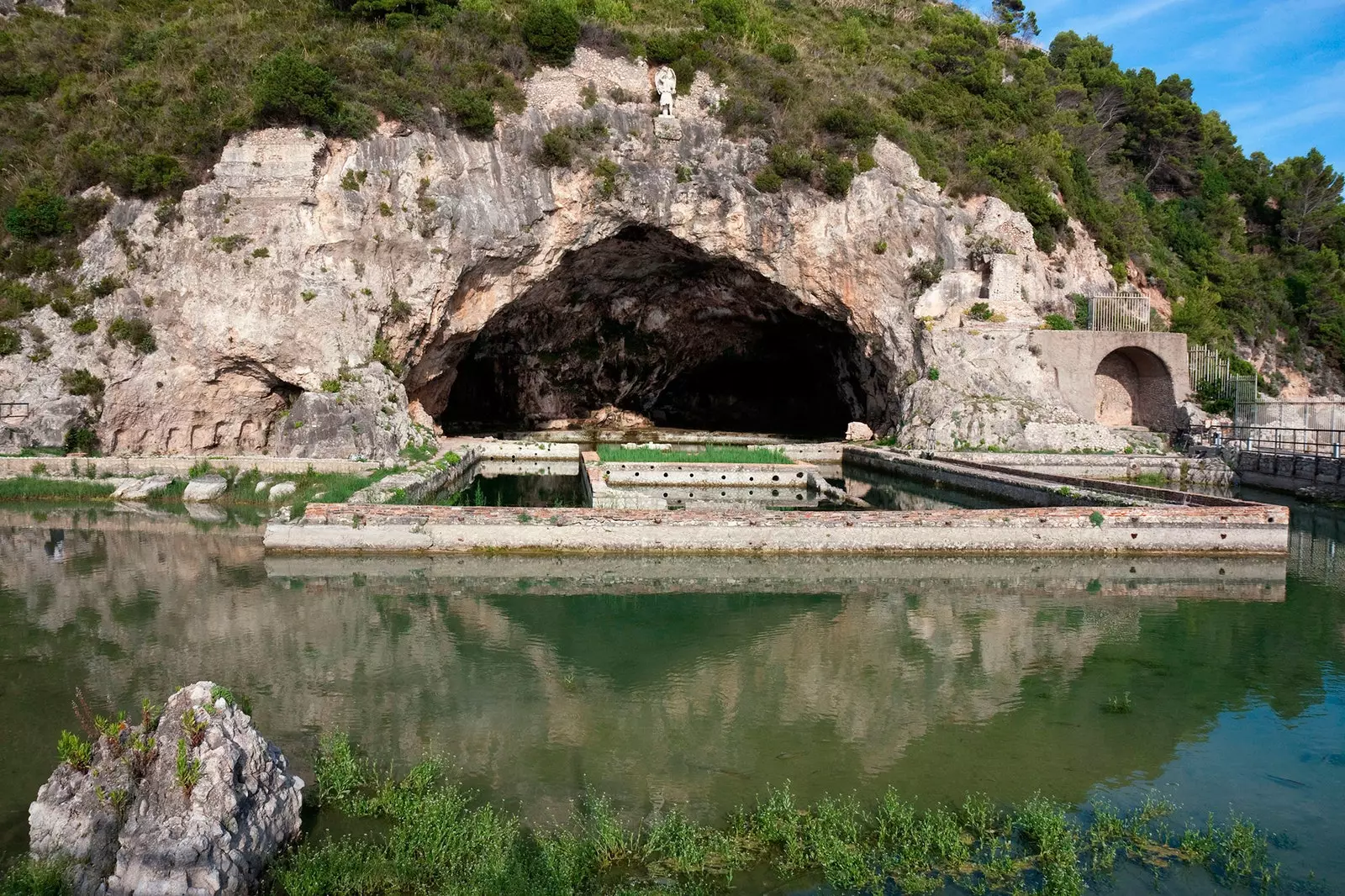
Tiberius Grotto in Sperlonga
In front of the grotto the emperor ordered to build a triclinium, a dining room with reclining seats. There he had lunch while he contemplated with his guests the blindness of the Cyclops and the assault on the hero's ship by Scylla, a marine being with the torso of a woman and the tail of a fish. Four angry dogs erupted from his waist. For those who there drank wine from silver cups, the monstrosity was part of a puzzle game.
In the capitals of the cloister of the monastery of Silos we find harpies with the face of a woman and the body of a bird, dragons, matted lions, centaurs and winged griffins with the head of an eagle. In the High Middle Ages, a lion was considered as fantastic a being as a unicorn. The real and imaginary fauna appeared illustrated without distinction in bestiaries that the artists used as a reference in their works.
"In the cloisters, where the brothers practice their reading, what reason do they have so many ridiculous monsters?" , San Bernardo de Claraval wondered already in the 12th century.
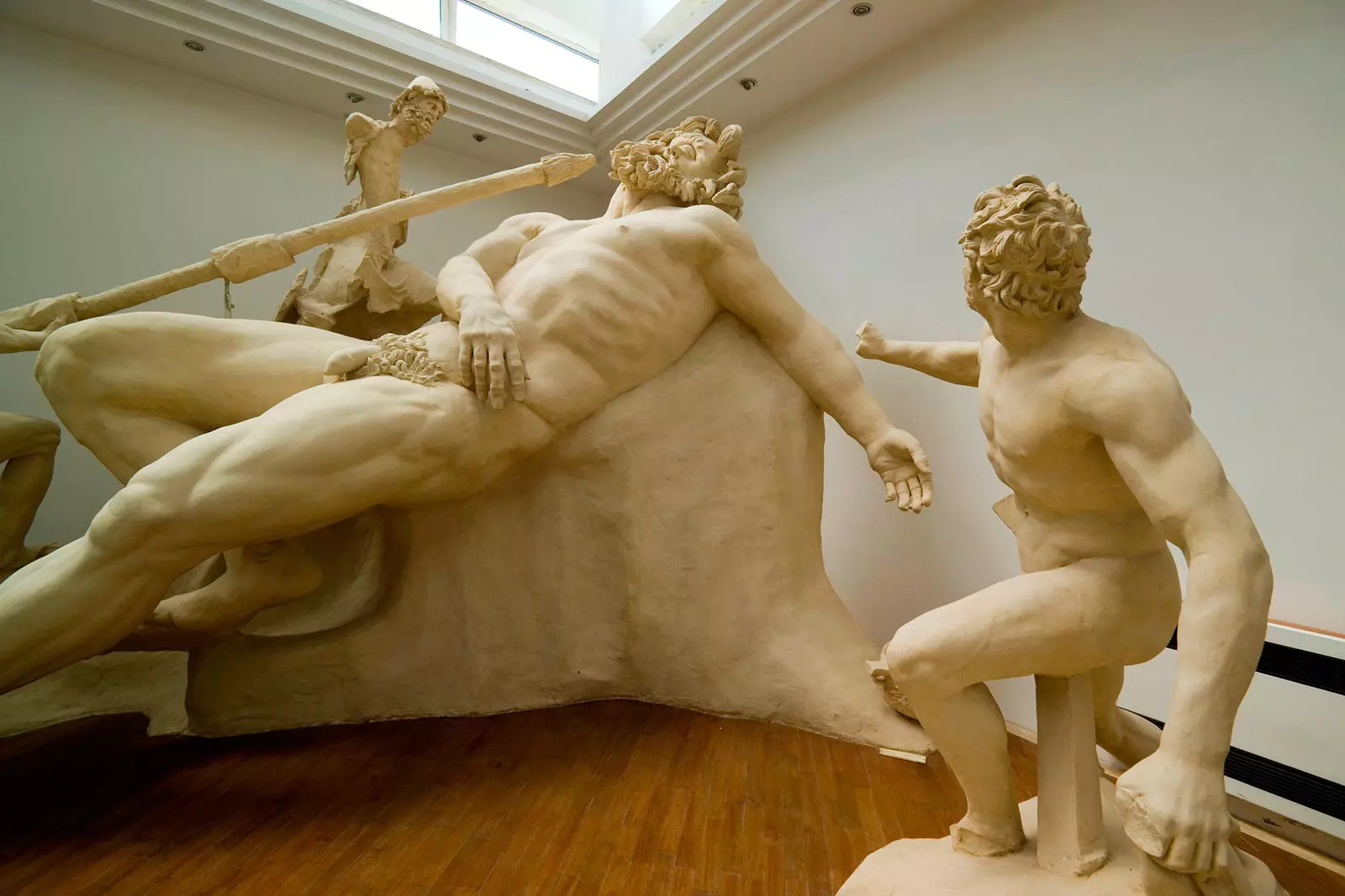
Sculptural group in which Ulysses blinds the only eye of Polyphemus with a spear
Like today, in the Middle Ages the monster was outside. He was alien to civilization and Christian society. His presence had an obvious function: the warning to those who broke the divine law. His fate would be the torture of the infernal monsters that Bosch recreated centuries later with visionary fantasy from the same models as the artists of Silos.
But this was not the only role for him. Some of them, like the griffin, protected against the presence of the Evil One and others, according to travellers' accounts, inhabited distant lands and represented the threats that awaited the monk outside the monastery walls.
In Viterbo, in Lazio, there is a garden: the Parco dei Mostri. The writer Manuel Mujica Lainez dedicated to Bomarzo a novel about the life of Duke Pierfrancesco Orsini, the creator of it. In the story, Orisini, obsessed with alchemy, overcomes his physical handicaps and ascends, with relentless ambition, in Renaissance Italy.
Although it is unlikely that the Roman nobleman shared the concerns of the literary character, it is inevitable that A visit to this park populated by fantastic beings awakens the imagination. Beneath the castle, the paths lead to sculptures of mermaids, a dragon attacked by lions or a giant turtle. The entrance to a grotto takes the form of the mouth of an orc and warns: thoughts fly. Inside the cave the echo multiplies the words.
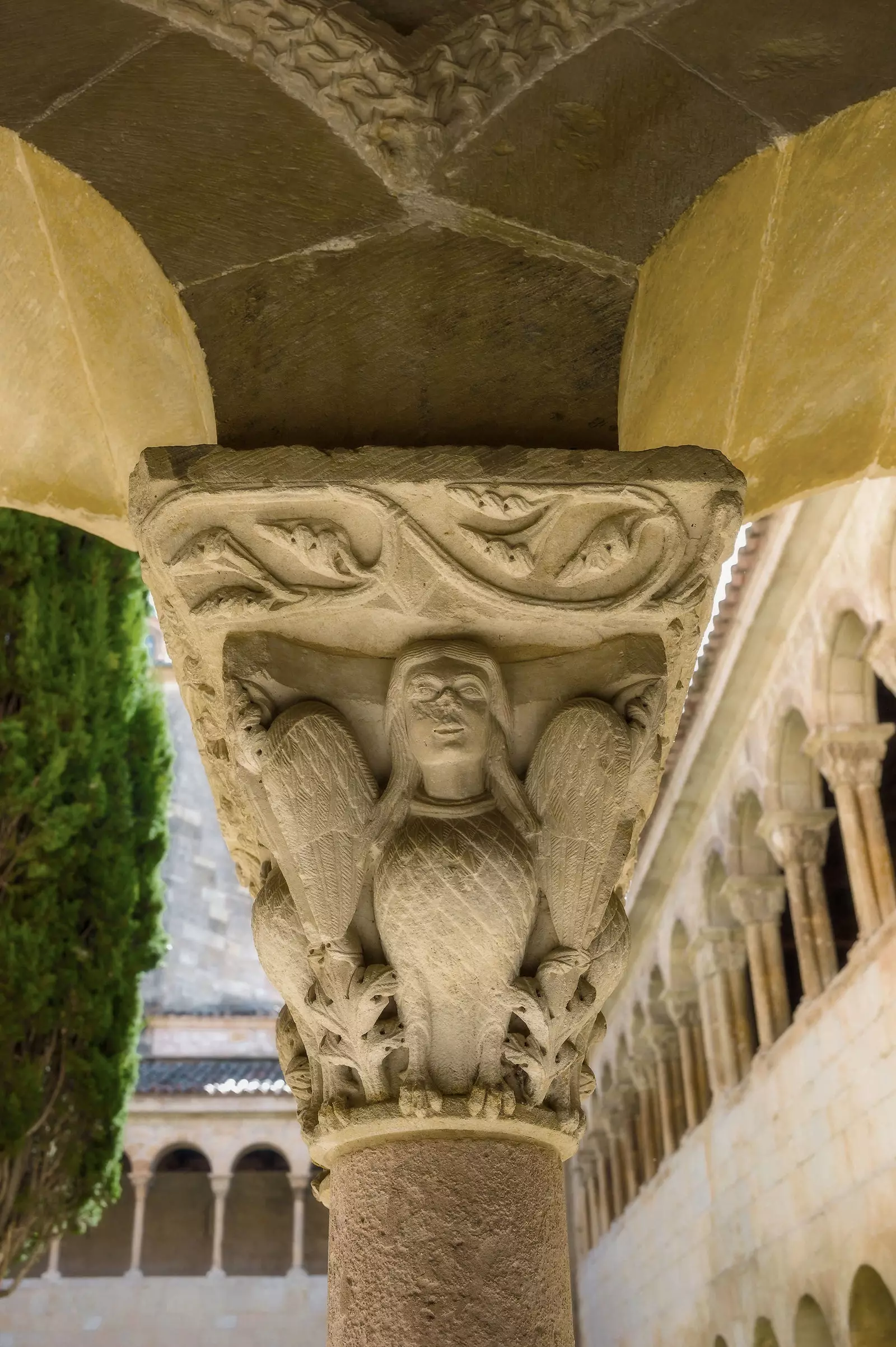
"In the cloisters, where the brothers practice their reading, what reason do they have so many ridiculous monsters?"
The beings of Bomarzo respond to caprice and invention. They are figures whose symbolism remains hidden. The monsters enunciate a fantastic and incomprehensible message.
An underground enclosure, a sea cave, a cloister, a park and a museum.
The monsters wait in the gloom of Goya's Black Paintings room in the Prado Museum. Goya takes the monster to another plane. for the painter, the monster is in us, around us.
What causes horror is born in the sleep of reason, which he illustrates in the Caprichos, in the cruelty of war, in the rapacity of a society that attacks the weak, in the madness of Saturn that devours his children, in the ignorance of a duel with clubs.
The monsters are expelled, they remain outside, in the dark. They provoke fear, but they also awaken fantasy and reveal aspects of ourselves that we are reluctant to contemplate.
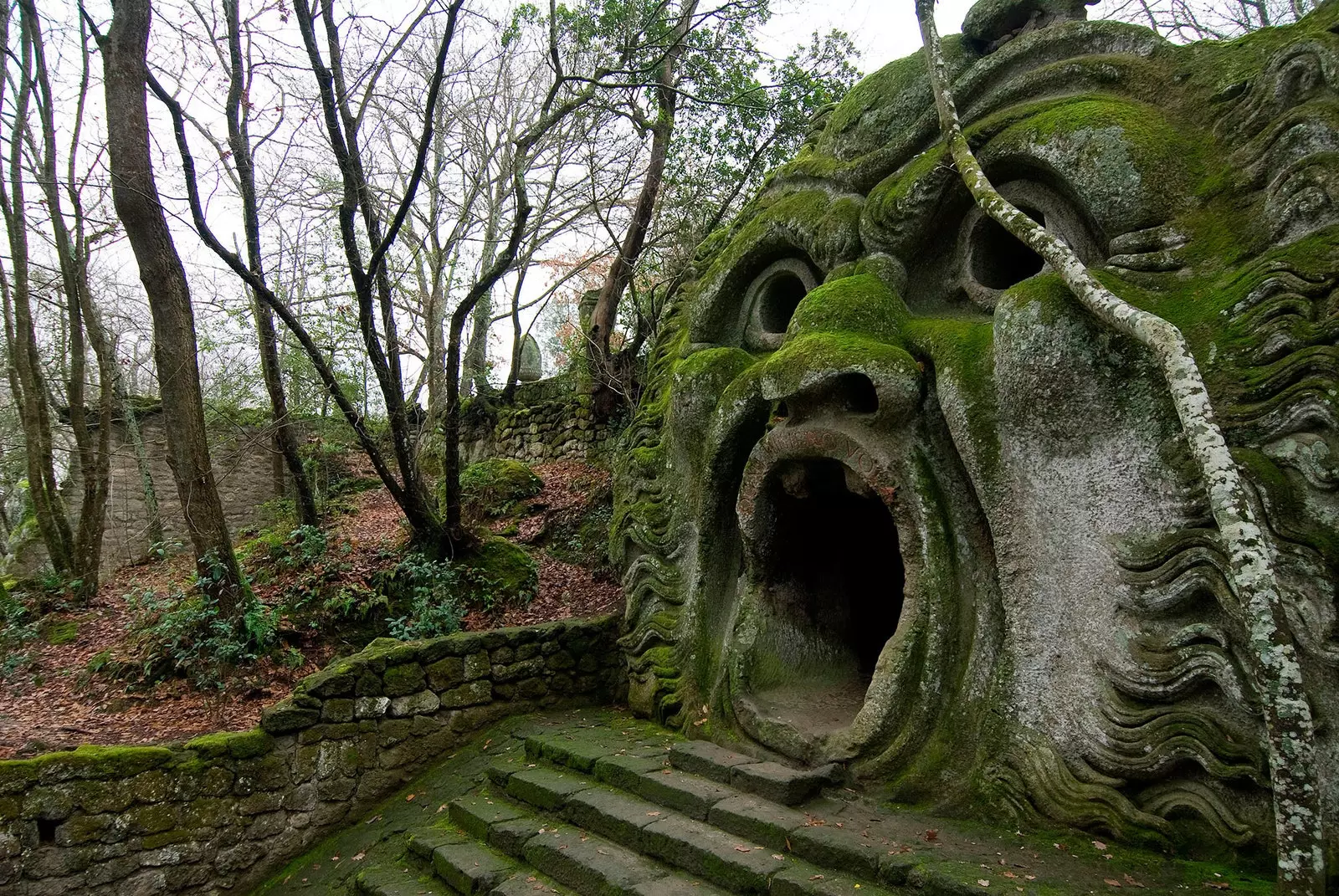
The mythical mouth of an orc in the Parco dei Mostri
